Thank you so much to Iraj Paran for doing this written interview with us. I was joined by Wendy Brydge and Will Davenport for this amazing opportunity. We are honored to have been able to ask Mr. Paran some questions.
10/10/2022
|
|
|
|
|
Iraj Paran
|
|

|
|
Iraj Paran is an Emmy Award winning animation artist whose career at Hanna-Barbera Studio has spanned over 30 years. He started working as a background artist and quickly was promoted to art director. He designed presentation artwork for Joseph Barbera that was used to pitch new shows.
Iraj Paran was responsible for Graphics and Title Design for productions, art for merchandising, publicity art, Cel Art, home video, etc. He designed the logos for Hanna-Barbera and the logo for the The Funtastic World of Hanna-Barbera ride.
He worked directly with Bill Hanna, Joseph Barbera and Iwao Takamoto on many projects for the studio. He also traveled with Mr. Hanna to demonstrate the promotional products to licensees in the US and abroad.
In 1994, Iraj Paran was awarded an Emmy for outstanding achievement in Graphic and Title Design for The Addams Family animated series.
We are honored to have been able to ask Mr. Paran some questions.
|
|
Scooby Panel (Nikki): How did you become interested in art? Did you go to art school?
|
|
Iraj Paran: As a child, I loved to draw and paint. At school, I created booklets of art for my teachers, designed the school’s newspapers and was involved with various art projects. I used to watch the MGM’s Tom and Jerry shorts, and was fascinated by the stories and the design elements. After finishing high school, I attended Art Center College of Design in Los Angeles and majored in Advertising Design.
|
|
|
Scooby Panel (Nikki): Can you tell us about your career? How and when did you end up at Hanna-Barbera?
|
|
Iraj Paran: While at Art Center working on finishing my degree in art, I was looking for a temporary summer job and went to the Hanna-Barbera studio. I remember Bill Hanna looked at my portfolio and immediately offered me a full time job to work at the studio’s Background department. Three seasons after that, I was promoted to the art director role and became in-charge of studio’s Art and Title Department. Even though I was not trained in animation, my new role gave me opportunities to use my skills in creating logos and title design for the opening and closing of the shows in production. My forte in advertising design also helped me to get involved in design and creation of thousands of studio produced merchandising art, Limited Editions, etc.
|
|
|
Scooby Panel (Nikki): Who were your mentors in the industry? Did you get to work with any of them at any point during your career?
|
Iraj Paran: In addition to Bill Hanna and Joe Barbera, my mentor was Walt Peregoy, whom I learned a great deal from when I worked with him in the background department. He was instrumental in my promotion to the art director position.
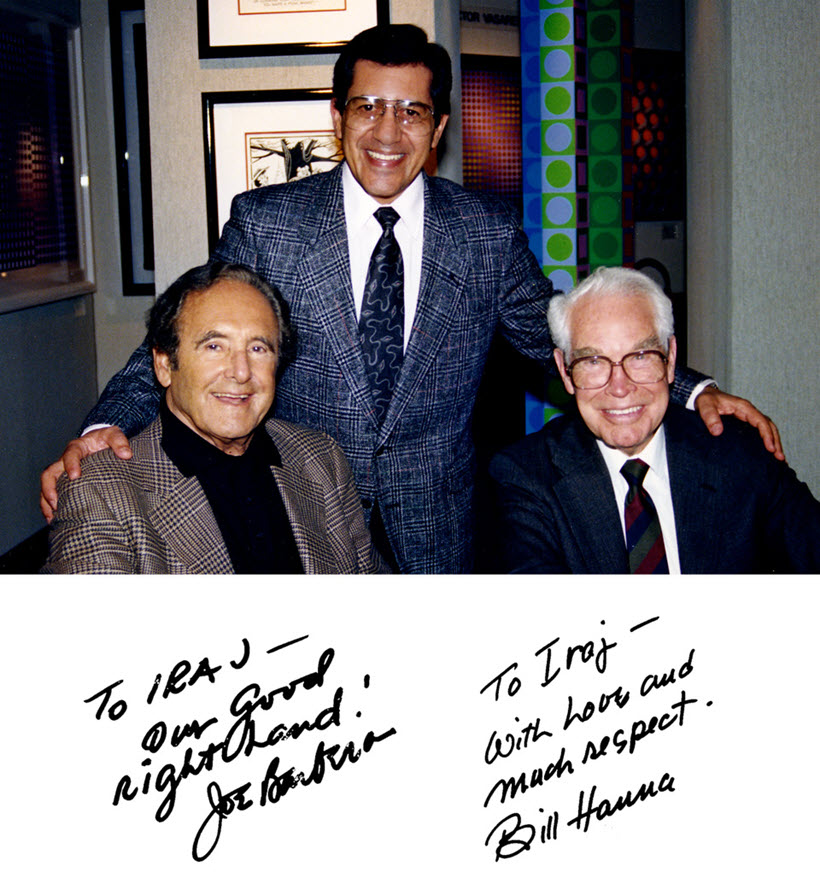
Iraj Paran with Joe Barbera and Bill Hanna. (Photo: Courtesy of Iraj Paran)
|
|
|
Scooby Panel (Nikki): You worked on The New Scooby-Doo Movies. Do you happen to know who chose the guest stars that were on the show? Did you have any dealings with the guest stars or voice actors when you worked on Scooby-Doo?
|
Iraj Paran: I was in the background department working under supervision of Walt Peregoy. Walt stylized the backgrounds and assigned artists to work on creating the BGs. For the “Scooby-Doo, where Are You?” whenever there was a need for letterings on the backgrounds, Walt would ask me to help out because he liked my penmanship and my ability to do nice letterings. I designed title card for numerous shows including The New Scooby-Doo Movies. The guest stars were selected based on their 1970s popularities.
I was good friend with wonderful voice actors such as Daws Buttler, Casey Kasem, Shannon Farnon, June Foray, and Janet Waldo.
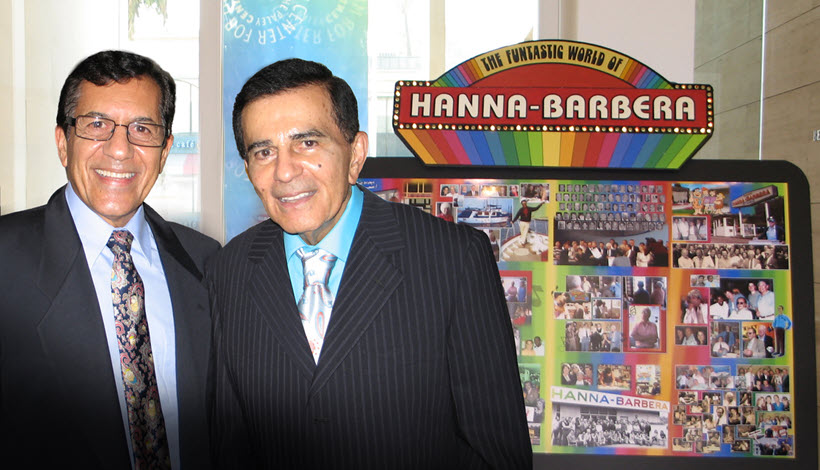
Iraj Paran with Casey Kasem (Photo: Courtesy of Iraj Paran)
|
|
|
Scooby Panel (Nikki): You also worked on the Scooby-Doo series with Scrappy in them. Do you know who came up with Scrappy?
|
Iraj Paran: When the original Scooby-Doo series was created, the producers rejected the idea of having a small dog with the great dane as his side kick. Later in the late 70s, Don Jurwich who was the producer, suggested to bring back the small puppy in the series, and that was the beginning of developing Scrappy-Doo character as Scooby-Doo’s little nephew (son of Scooby’s sister Ruby-Doo).
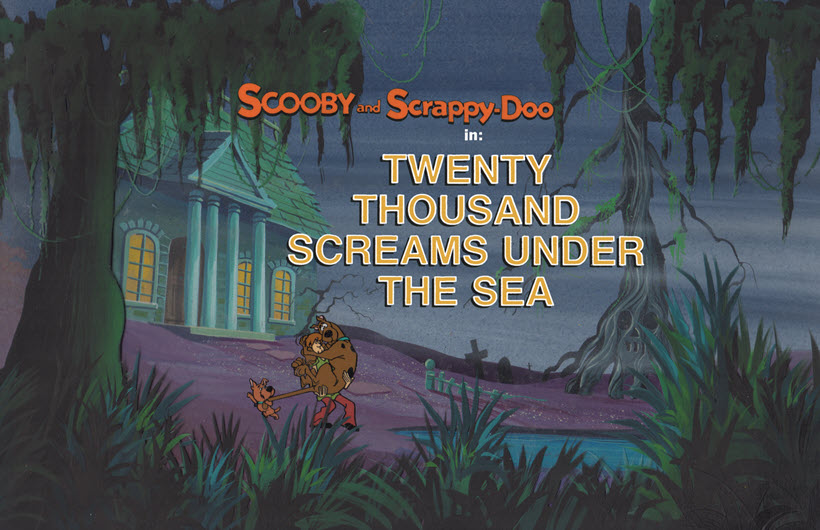
Title card for the Scooby-Doo and Scrappy-Doo episode "Twenty Thousand Screams Under The Sea" by Iraj Paran. (Photo: Courtesy of Iraj Paran)
|
|
|
Scooby Panel (Nikki): You were a background artist on Josie and The Pussycats and Dastardly and Muttley In Their Flying Machines before moving to graphics. Was background art not something you cared for or was the move more of a promotion?
|
|
Iraj Paran: While I did enjoy working on many fabulous backgrounds, I felt lucky when I was promoted to the art director role where I could use my creative skills and enjoyed working with a vast group of talented people.
|
|
|
Scooby Panel (Wendy): There are so many facets to animation art, a lot of people are involved, and we as fans don't always know what each job title means. Can you please explain?
|
Iraj Paran: There are so many facets to animation art, a lot of people are involved, and we as fans don't always know what each job title means. Can you please explain?Different departments had specific jobs and responsibilities. To get to the final footage print, the process would start from Script writing, followed by Storyboard, Recording, Track reading, Layout/Character models, Director, Animators, Animation Checking, Photocopying, Cel Painting, Background Painting, Camera work, Dubbing, Editing, and Negative cutting. Art Scott who was a writer/producer at the studio and I, worked on a “Process of Animation” booklet. In that booklet, different characters explained the animation process. I’m enclosing the cover of the booklet and one of the pages depicting Scooby-Doo explaining the voice recording.
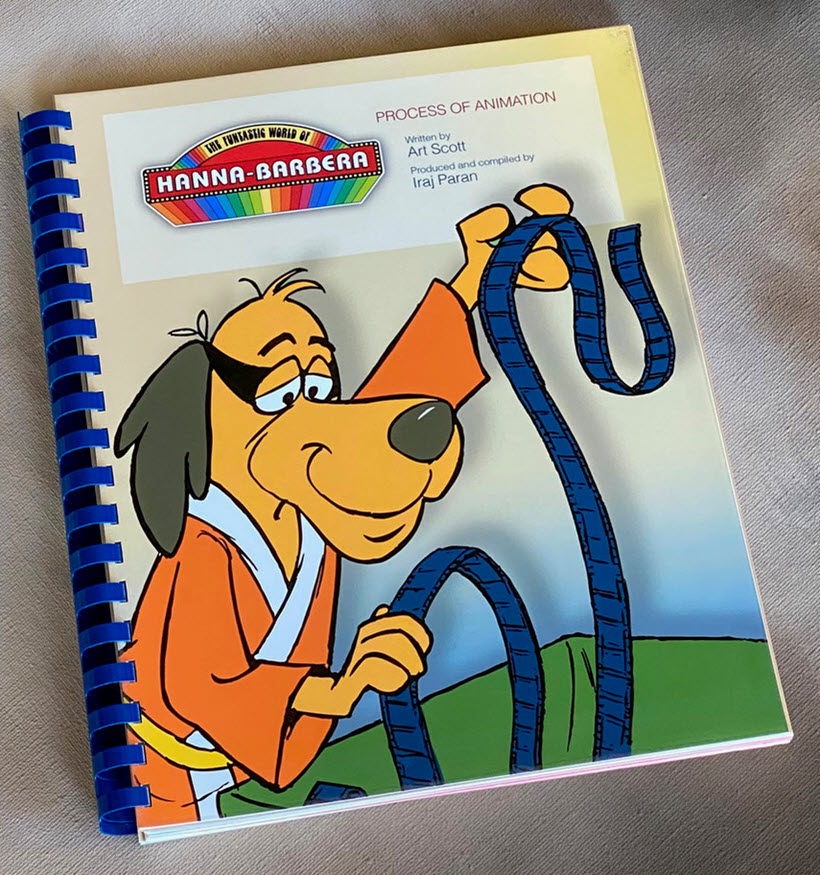
"The Funtastic World of Hanna-Barbera - Process of Animation" by Art Scott and Iraj Paran (Photo: Courtesy of Iraj Paran)
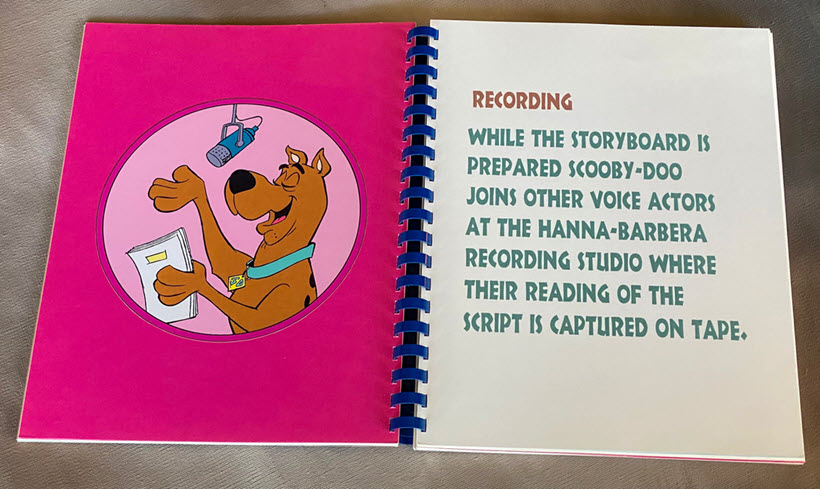
Scooby explaining the recording process from "The Funtastic World of Hanna-Barbera - Process of Animation" by Art Scott and Iraj Paran. (Photo: Courtesy of Iraj Paran)
|
|
|
Scooby Panel (Wendy): Could you please explain what your roles as graphics artist and title designer entailed? Are they different? Did you create the title cards on certain series? We LOVE Scooby Doo's title cards, especially the spooky mansion cards from The Scooby Doo Show (1976-78)!
|
Iraj Paran: When I was in-charge, the terms “Title design” and “Graphics” were inter-changeable. Therefore, If you see “Graphics” for a show, the Title design was included. We used both terms for the shows opening and closing titles and additional ancillary elements within the show which included the “Art Cards” and or “Bumper Cards”. I did title design/graphics for numerous shows including Scooby-Doo series, Hong Kong Phooey, Superfriends, Jabberjaw, Speed Buggy, Clue Club, and many others. In 1994, I won an Emmy for the Addams Family series.
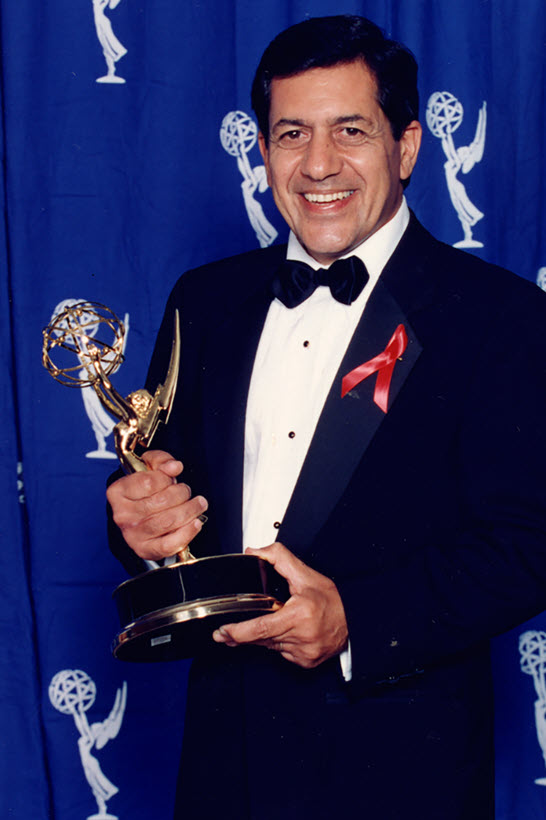
Iraj Paran won an Emmy Award for The Addams Family. (Photo: Courtesy of Iraj Paran)
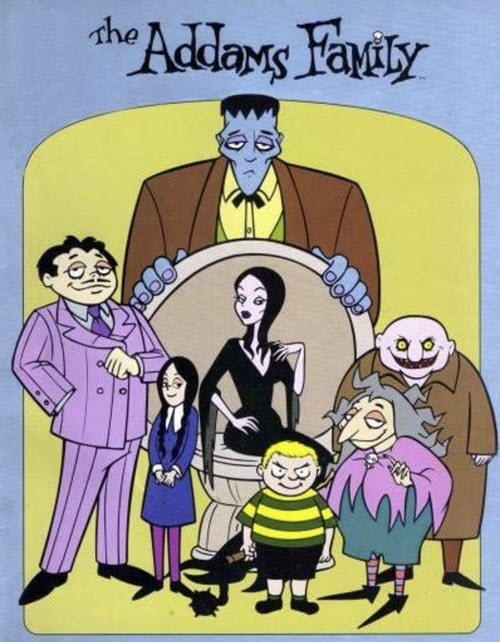
The Addams Family aired from 1992 to 1993. (Photo: Screenshot from IMDB)
|
|
|
Scooby Panel (Nikki): You were also in charge of merchandising art. Can you also tell us what that entailed?
|
|
Iraj Paran: The process of creating art for merchandising started with a request from a licensee from a manufacturer who wanted to use one of H-B’s favorite character/characters depicted on their consumer products. After communications and negotiations between marketing, licensee or manufacture staff and our department, an idea or concept was agreed on. I was in-charge of assigning different artists giving the concept and instructing them on how to launch art for the specific product. The layout artist did rough sketches to fit the concept. The satisfactory sketches and the layout drawings were then selected. The tissue corrections /clean-up was done next. I did most of the hand inking of the characters myself, enhancing and making them reproducible. Depending on the project, hand painting and background illustrations were also done by another group of artists. Once the art was approved, the manufacturer applied the finished art to their product and marketing was followed.
|
|
|
Scooby Panel (Wendy): Are you a Scooby-Doo fan yourself?
|
Iraj Paran: I love Scooby and I’m happy he is such a fan favorite icon. He deserves it!
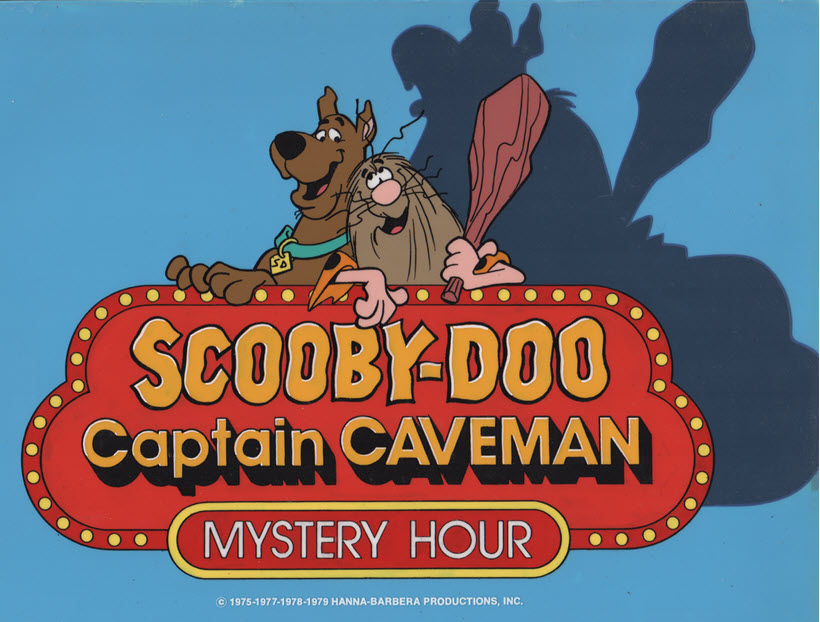
Logo for Scooby-Doo Captain Caveman Mystery Hour by Iraj Paran. (Photo: Courtesy of Iraj Paran)
|
|
|
Scooby Panel (Wendy): What was the most challenging aspect of the work you did on Scooby specifically?
|
|
Iraj Paran: As in any job, there are always obstacles and challenges, and Scooby-Doo series was no exception. Dealing with the network and meeting their deadline was always interesting.
|
|
|
Scooby Panel (Wendy): Of the different jobs you did at Hanna-Barbera, which did you enjoy doing the most?
|
Iraj Paran: Art direction and creating titles perhaps. I very much enjoyed my involvement in merchandising concept and design. Art approval and overseeing the work of amazing artists diligently working on those fabulous products are highlights of my long time career. I loved working on the Limited Edition concepts, and developing the coloring books and brochures was always fun.
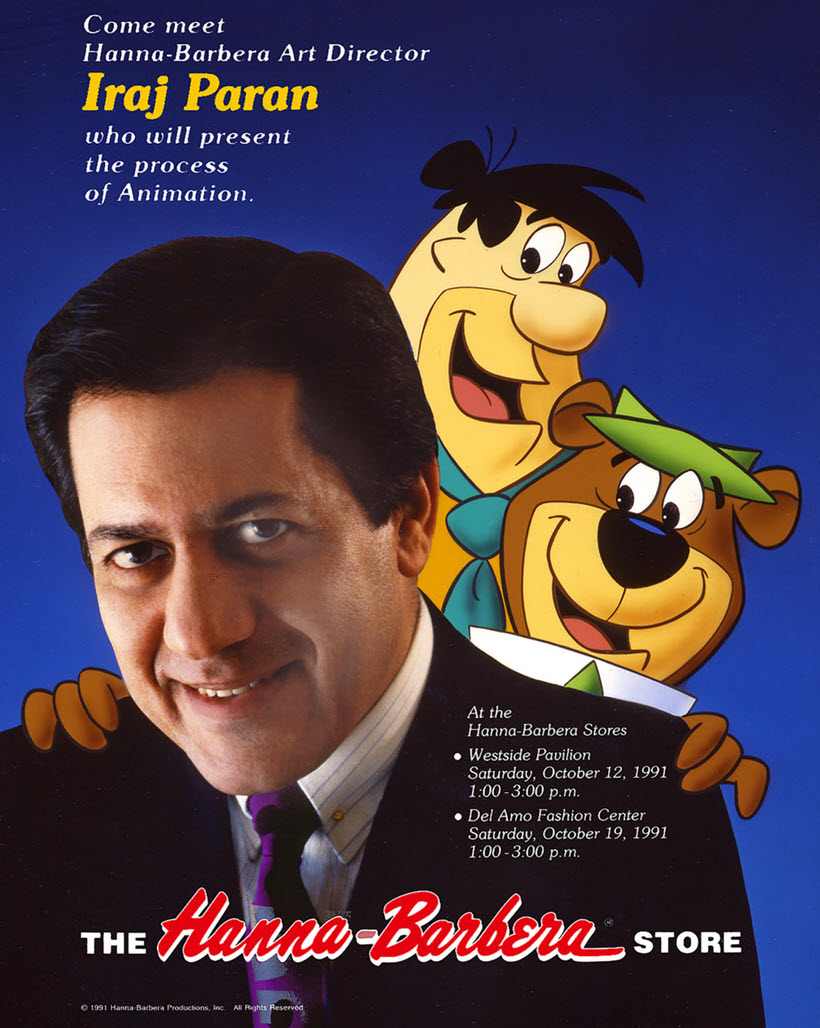
Iraj Paran on a Hanna-Barbera Store poster. (Photo: Courtesy of Iraj Paran)
|
|
|
Scooby Panel (Wendy): While you were at Hanna-Barbera, how much creative input did William and Joe have? Did you have a lot of creative freedom in what you were doing, or were HB more hands-on and particular with what they wanted? What was it like to work with Bill and Joe?
|
|
Iraj Paran: Bill Hanna and Joe Barbera made a wonderful creative team. They complemented each other. They were each extremely talented in the certain areas of cartoon production. Joe Barbera for example was more on the creative side of developing shows and characters. Bill Hanna was in charge of production. Bill wrote lyrics for the show’s main titles and did timing for the shows. The two of them had total respect and trust in one another. They hired the most talented employees, expected perfection and importantly, they empowered them. We at the studio were busy and had deadlines to meet. Bill and Joe’s casual and approachable leadership made the work place a family-like atmosphere. Hanna-Barbera studio was “Funtastic,” it was also very productive and fun.
|
|
|
Scooby Panel (Wendy): Did you work in the business long enough to begin to see the transition from traditional art to digital? What are your thoughts on how the traditional form of animation art is possibly becoming a "lost art"?
|
|
Iraj Paran: In 2D Animation, with 24 drawings for each second, each frame was drawn and inked/painted by hand, so was the background all done by hand. That process was rather time consuming. In the 1980s, we utilized digital in the Ink & Paint and Editing departments for The Jetsons series. I have been using Photoshop for creating certain kind of artwork like designing my book, Xmas cards, birthday cards and freelancing jobs, etc.
|
|
|
Scooby Panel (Wendy): You worked on many top properties like Scooby-Doo over the years. Is there anything you've done that's not very well known that you wish people knew more about?
|
Iraj Paran: Nowadays people rely on internet for information, and they might see my credits for titles design and graphics. However, I was involved with many other projects at the H-B studio. I did design and art approval for merchandising, consumer products, booklets, brochures, etc. I developed numerous logos and designed and prepared presentation art for Joe Barbera. I initiated the Limited Edition art at the Hanna-Barbera studio. I did quality control to maintain the integrity of the cartoon characters, etc.
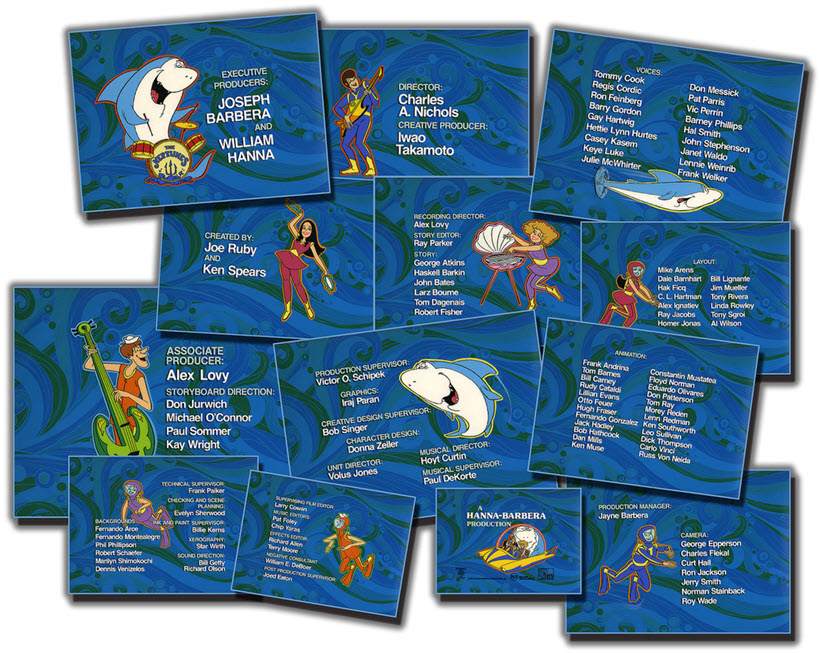
Closing episode credit cards by Iraj Paran. (Photo: Courtesy of Iraj Paran)
|
|
|
Scooby Panel (Wendy): You've had an impressive career -- but is there anything you didn't get to do that you wish you had?
|
|
Iraj Paran: I was content with my role, and never thought of doing anything else.
|
|
|
Scooby Panel (Wendy): Do you have a collection of memorabilia or artwork?
|
|
Iraj Paran: Yes. I treasure and enjoy my nice collection.
|
|
|
Scooby Panel (Will): Did the graphics team work closely with animators, or were departments siloed?
|
Iraj Paran: As an executive in-charge of the Art department, I worked very closely with Iwao Takamoto in design projects when we prepared presentation art for Joe Barbera to pitch new shows. My position involved working with both Bill Hanna and Joe Barbera on studio related projects and also helped both men on their personal projects. I also worked with different writers, producers, animators, layout artists, camera folks, Ink & Paint staff and various merchandising team and many others.

Hanna-Barbera signature logo by Iraj Paran. (Photo: Logopedia)
|
|
|
Scooby Panel (Will): You worked with many iconic properties, were there projects or characters you were more invested in?
|
Iraj Paran: One of my favorite design project was a project we did for a restaurant in Houston, Texas named “Scooby’s Fun Factory Pizza.” I’m proud of The Funtastic World of Hanna-Barbera rainbow colored arcade style logo and the Hanna-Barbera signature logo, which have been used worldwide. I worked very closely with Ted Sennet on “The Art of Hanna-Barbera” book. Every year, I designed the studios calendar which showcased the year’s production favorites.
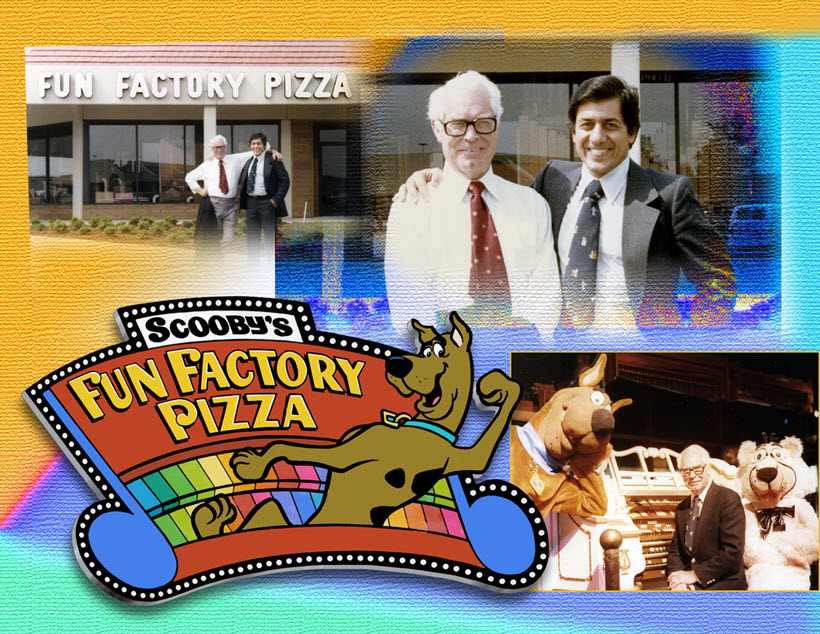
Bill Hanna and Iraj Paran at Scooby’s Fun Factory Pizza in Houston, TX. (Photo: Courtesy of Iraj Paran)
|
|
|
Scooby Panel (Will): Does graphics work include the animated logos for HB and other companies which seemed to use much more sophisticated animation techniques?
|
Iraj Paran: The Process of creating Titles and Graphics for any shows was fun and involved. I had meetings and discussions with writers and producers about the show’s main characters and the stories. Generally, based on those conversations, I would decide to design the titles and create graphics for each show. Sometimes, and depending on the specific show, we used pertinent parts of the show or character with a specific pose. For “The New Scooby-Doo movies” for example, I worked with Bob Singer and we decided to use the flashlight in Shaggy’s hand as a spotlight creating an area for the guest stars who appeared in different episodes. The letterings portrayed the mystery look for Scooby-Doo show’s opening/closing title. Different H-B logos were used at the end of each production.
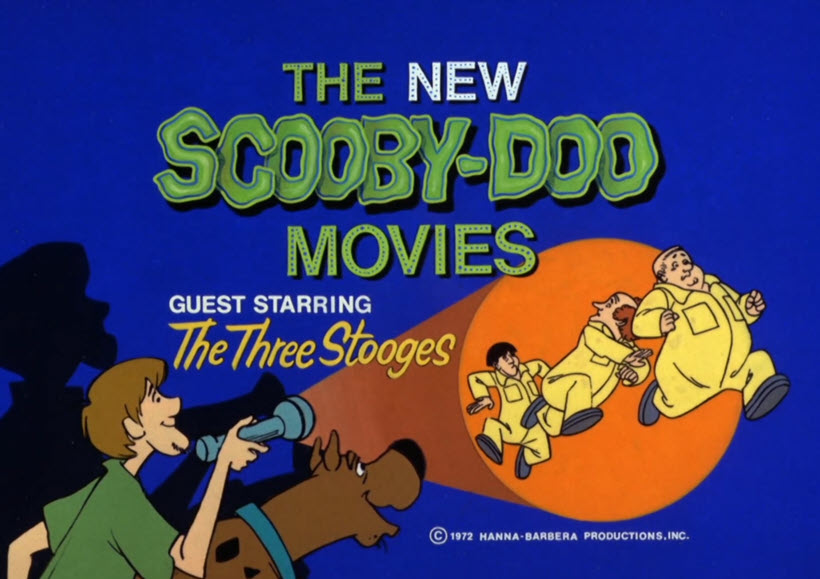
The New Scooby-Doo Movies title card created by Iraj Paran and Bob Singer. (Photo: Screenshot from the actual episode)
|
|
|
Scooby Panel (Will): Is graphics work done as a team or is it a solitary process?
|
|
Iraj Paran: Our work at the Hanna-Barbera studio was always teamwork, nothing was solitary.
|
|
|
Scooby Panel (Will): We’ve heard great stories about the culture and characters at HB studios. What do you miss most about working there?
|
|
Iraj Paran: I miss Bill and Joe, my animation friends, the fun and family atmosphere of the studio. We had artists from different nationalities and backgrounds all working together in a beautiful harmony bringing joy to the people and children of the world.
|
|
|
Scooby Panel (Nikki): Have you ever been given a piece of advice that stuck with you? And do you have any advice for anyone that is looking to get into the animation industry?
|
|
Iraj Paran: “This too shall pass” was Joe Barbera’s phrase whenever there were changes at the studio.
Bill Hanna used the famous “Yabba-Dabba-Doo” phrase a lot to express his delight and to praise.
My suggestion to the young generation would be: always trust yourself and aim high, you’ll make it!
|
|
|
Scooby Panel (Nikki): Do you have any fun stories you can share with us about your time at Hanna-Barbera or about the people you worked with?
|
Iraj Paran: Recently, I finished my memoir a book titled “A Great Old Time, The Primetime Years of Hanna-Barbera” which I hope to share with the H-B fans whenever the time is right. While working on my book’s chapters, I reminisced with joy remembering all the Yabba-Dabba-Doo times I had at the Hanna-Barbera studio and the privilege of working with the most amazing group of super talents.
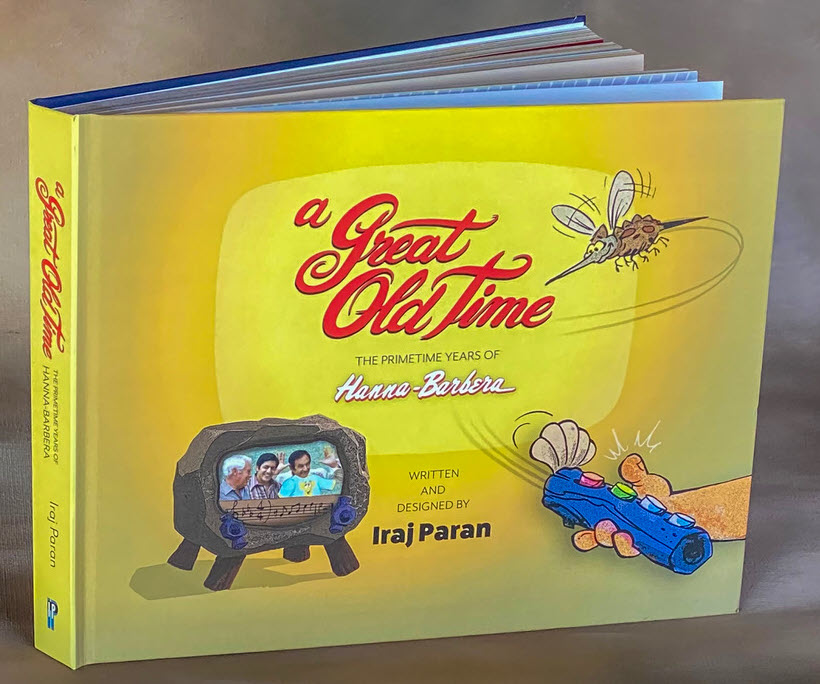
“A Great Old Time, The Primetime Years of Hanna-Barbera” by Iraj Paran. (Photo: Courtesy of Iraj Paran)
|
|